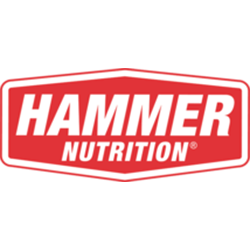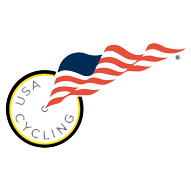Note: As we move toward specific training into the cycling season we recommend you purchase a heart rate monitor. You don’t need a fancy one, just a basic monitor that tells heart rate (HR) and has a stop watch or clock. Visit one of our bike shop hubs to ask about HR Monitors.
Racing Season in California is a long season and there are plenty of races to attend from January through September. You have to pick and choose the racing so you do not over train too early and then get burned out before the end of the summer. There are some races that you will come to just for fun and training and then others that you want to plan for your best “peak” races.
Planning your season is also based on other sports and your family vacations. If you are new to the sport and/or a young rider some of the best events you can do will be the local Tuesday Night Training Criterium starting in April. These races begin in a couple months, require little travel and do not cost very much money. That gives you time to build a base before racing. Doing other races before that time is fine, just be sure to keep on track to build your base.
Base training is a time of the season that will focus more on increasing your aerobic base and working on riding skills. You want to ride consistently at least 4-5 days a week and include riding on flat, rolling and hilly terrain. Skills include practicing standing while climbing, shifting gears smoothly, riding in groups, practicing pacelines and doing some sprints. We often practice all these activities on the All Team Rides and they should be something you do with your teammates or parents during the week.
The base training for young and older riders will differ by the hours you ride and when you begin training. Another factor will be how many years you have been riding and racing. If you are 14 years and older (or have been racing more than 3 years) you should be planning your cycling season earlier (like in November or December). The older you get the earlier you will start and the longer your rides will be on the endurance days.
One mistake you want to avoid though is training too hard and too much while your body is still growing. There are times when you need to rest so you can grow healthy and strong. This is why we have a season plan which includes rest days and rest cycles.
Training Information:
To describe the type of workout you will be doing each day we will use the term “blocks”. For example, if you are doing High Cadence then that day’s workout block is “High Cadence (HC)”. Below the sample week is a list of some of the terminology we will use in training. This describes the details of what is contained within each block.
The reason I use the term “block” is so that if your schedule does not allow you to fit precisely to the proposed weekly schedule you can arrange your week to do all the Blocks even if they are not in exactly the same order. Try the proposed sample training week, then you can fit in the blocks throughout the week to best suit your personal schedule. Also, during the school vacations you can adjust your riding to fit in these blocks of training.
A week of Training should include:
Riding
- 2 x ENDURANCE blocks one with hills and one with tempo riding. (Wed & Sat)
- 2 x HIGH CADENCE blocks on the flats (one with sprints) (Thurs & Sun)
- 1x HILL INTERVAL block (Tuesday)
- 1 x RECOVERY ride block or Cross Training (Friday)
Rest
- 1 x REST block –a day totally off and not exercising. Good day for stretching and sit-ups (Monday)
*Sometimes you need to have two days off a week for total rest. In this case you can change the recovery ride to an additional rest day or the other day off the bike can be a cross training day (like a hike). Another factor that will change your Thursday/Friday/Saturday training plan is if you are going to race on the weekend. There are some suggested training notes below in the sample week.
Sample Week of Team Swift Training for Road Cycling
Monday: REST. Day off. Get your homework done early so you have more time to ride as the week goes on! You can do some easy cross training if you didn’t train too hard over the weekend.
Tuesday: Hill Intervals Block. 1.5-2 hrs. Warm up for ~20-30’ before riding to a short hill near you house which is ~3’ long. See Alternating Hill Intervals below in the terminology section.
Wednesday: Tempo/Mid week Endurance block. 2 or more hours of riding. Time is still short in February for riding after school, so you will need to be organized and get on your bike as soon as possible. Have everything ready the night before. You need to add 4 x 5’ in zone 3 on the flats riding in the drops of your handlebars or in your time trial bars. Tempo (z3) intervals will give you a deep training base to build your strength and speed as the season progresses. Be sure to keep a cadence of ~90rpms even when going over any rollers.
Thursday: Recovery Ride or High Cadence Spin. Go for a Recovery Ride today (1hr) if you are going to race on the weekend. Otherwise do a High Cadence ride (spinning) for ~1-2 hrs (no sprints) or cross training (hike).
Friday: Pre-Race Pyramids or Recovery Ride: If you are going to race on Saturday then you need to do 2×1’ pre-race pyramids. Otherwise Recovery Ride today to prepare for your weekend Endurance Ride.
Saturday: Race or Endurance Block with Workout #1. This ride should be ~2 1/2 – 4 hours depending on your age. The ride can be on any terrain with at least one major hill. There is a group ride from many bike shops in your area although keep in mind that these are not specifically Team Swift rides. You need to know your ability to keep up and if you were dropped you need to be self-contained with pump, tube, money, ID, and knowledge of how to get home.
Note: if you are going to race on Sunday then you should do your pre race pyramids today instead of an Endurance Ride.
Sunday: High Cadence Block with Sprint Workout B or Race. 2 – 2½ hours. Go on a flat to rolling course at a high cadence spinning about 100-120 rpms (crank revolutions per minute). You can count your revolutions using a watch. This averages out to about 20 full revolutions in 10 seconds. In addition to riding at a high cadence throughout the ride you also need to incorporate Sprint Workout B (see terminology below)
Sample Week of Training for the NorCal Mountain Bike Team or Cyclo-Cross.
* If your MTB coach has a specific training plan you should not try to do both workouts. It does help to do at least one day a week on the road bike though so you are better adapted for spring racing. Also, your high cadence days can integrate a number of mountain bike drills for example practicing your starts as one type of interval. If you have a weekend cross race then the other weekend day should be easy riding.
Monday: Rest Day
Tuesday: Hill Workout (MTB or Road bike) ~1.5-2+hrs
Wednesday: Tempo (on Road bike) or work on MTB skills~2 hrs
Thursday: High Cadence/Speed Day (on Road or Mtn Bike) ~1.5-2 hrs
Friday: Recovery Ride ~1hr
Saturday: Endurance Ride with Hills ~2-4 hrs (see Endurance w/o below)
Sunday: High Cadence Ride with Sprints ~1.5 hrs
Training Notes:
- This training schedule is for basically riders over 15 years of age. For riders less than 15 years old then you can adjust the time of each ride by subtracting ½ hour – 1 hour off of most rides and by making sure Friday is a Rest day.
- Your coaches will help you with these workouts so you learn to do them on your own. Be sure to ask questions at the All Team Rides.
- This is a phase of training that builds endurance and core strength. After going to the gym twice during the week your legs will fill heavy. This is normal and a part of the strength building process. It is also very important to ride consistently. The more endurance miles you log in during this phase the better you will be later in the summer.
- If you have any soreness in your joints or other pains that do not feel like just tired muscles be sure to mention this right away to any of your coaches.
Zone: (Z) Training Zones
Training Zones (Z): Zones are the percentages based off the Lactate Threshold which is determined during the Computrainer or SRM test. Instead of saying zone 3 is one particular number like the lactate threshold we use these zones as a training tool and because your HR fluctuates due to a variety of reasons (temp, time of day, tiredness). This allows for the fluctuation of the actual LT as well.
Z1 = 65%-81% (of LT) Recovery
Z2 = 82%-88% Aerobic
Z3 = 89%-93% Tempo
Z4 = 94%-100% Subthreshold (LT)
Max= Hard as you can go to the finish line!
How do you know what your zones feel like if you do not have a Heart rate monitor or have not taken a test to determine your Lactate Threshold (LT)?
The basic zones listed below are Zones 1-5. Zones 1-3 are your aerobic zones and Zones 4 & 5 are anaerobic. Base riding is all done in zones 1-3. This is the riding you do when you first begin training for the season. You should do 2 months of base riding before beginning the sprints and hill repeats (anaerobic intervals).
You can estimate your zones by the descriptions below:
Z1: easy riding. Not much effort required
Z2: You feel the push of the pedals, but can still hold a conversation
Z3: You could talk if you had too, but you don’t want to anymore.
Z4 Feels like a max effort, but it’s a pace you could hold all the way up a 15’ climb
Z5: Max Effort is like the last 200 meters in the final sprint. When it’s over you are done!
Terminology:
Endurance (longer ride days of the week). This ride is not super easy nor is it max all out effort at this time of year. Steady paced riding and usually containing 1 – 2 longer climbs. The time of your endurance riding will also depend upon your age and experience ranging from 2 hours to 4 hours.
A: Workout #1 (W/O #1 will equal your endurance block) Times for your intervals will vary depending on the training cycle and your age.
-
- *3 x 5’ minutes on the flats (riding in Z3 alternating between high and low Z3 at approx 90 cadence. Start at low Z3 for one minute, increase to mid/high Z3 1′ and alternate each 1′ for each interval block)
- *2 x 10’+ minutes climbs (progressing from Z3 to LT)
*How to read this is you need a big loop that you can ride for on flattish terrain in zone 3, recover ride about 15 minutes before hitting a hill (or starting the next zone 3 interval), do the hill or zone 3 work (on a hill if I write 10’+ it means at least 10 minutes plus as long as the hill ends up being—it may take 20-30’ on some climbs. You need to do two long climbs of at least 10 minutes), descend, recover, interval, hill, etc… with rest times in between and always heading to the next best terrain for the next interval. Build loops that allow for these intervals. You have five intervals in this workout that can be done in any order throughout the ride. Warm up time and cool down time is assumed. Note; if you are on a group ride a zone 3 effort is easy to do by simply taking a long pull at the front.
*also, doing a city limit sprint along the way is totally encouraged if you can and I think you should take an opportunity to practice field sprinting. Don’t make a big solo effort to break away miles before the sprint. The purpose is to practice a field sprint (see length in definition of sprinting). This is some of the fun factor again by breaking the monotony of watching HR monitors and clocks.
Alternating Hill Intervals: After getting at least 20’-30’ minutes warm up go to a hill at least 3’-5’ long. There are three different types of intervals to do for this workout and 12 total intervals. You should ride in low zone 4 which means you are going pretty hard, but not all out.
- 5×1’ going up the hill in a regular gear staying seated the whole time
- 5×1’ intervals going up the hill standing the whole time
- 2×3’ intervals alternating between standing and sitting every 30”
- Recovery time between the 1’ intervals is 3’ and 5’ between the 3’ intervals.
Note: Be really careful if you are going to turn around and go down the same hill. Stop to the right side of the road at both the top and bottom of the hill before making the turn to go either up or down.
High Cadence: (high cadence or fixed gear day)
You need to average a 100-120 rpm spin throughout this ride. So choose the gear that allows the high cadence given the terrain. This is not an easy spin day. You should be riding zone 2 for the most part.
Spin-outs: Is high cadence spinning as fast as you can go in the small gears. You will want to be in approximately a gear of 39×15-17. Spinouts will be done in a prescribed amount of sets per session or otherwise can be done randomly throughout your ride or group ride.
A: 6 x 15 second spin-outs (Be sure to get a good warm up before doing any sprints. Plan your sprints anywhere throughout the ride. Pick a sign or something up the road to sprint towards.
B: 2 sets of 4 x 15 second spin-outs (Be sure to get a good warm up before doing any sprints. When doing each of the two sets you will spin out for 15 seconds then rest 1:45 before spinning again. So in essence you are doing one sprint every 2 minutes. Then recover ride (zone 1-2) for 15 minutes before doing the second set.
*Note: When doing sprinting be sure to keep your head up and watch for cars and debris in the road.
Sprinting: Full on sprinting like in the finish of a race. You do shift gears for this sprint. Go full speed for the time of the interval (i.e. 20-30”). You will stand to start sprinting, shift, stand a bit more then sit down to keep spinning if there is time. These are not power sprints, so be sure to stay in a gear that you can keep a really high cadence.
- 2 sets of 5 x 20” sprints (Be sure to get a good warm up before doing any sprints). When doing each of the three sets you will sprint for 20 seconds then rest 1:40 before sprinting again. So in essence you are doing one sprint every 2 minutes. Then recover ride (zone 1-3) for 10-15 minutes before doing the next set.
- 3 sets of 4 x 20” sprints (Be sure to get a good warm up before doing any sprints). When doing each of the three sets you will sprint for 20 seconds then rest 1:40 before sprinting again. So in essence you are doing one sprint every 2 minutes. Then recover ride (zone 1-3) for 10-15 minutes before doing the next set.
Pyramids—Pre-Race & Race Day Warm-up:
* Doing pyramids are a great way to do a pre-race day warm-up, race day warm-up and Time Trial warm-up. The structure is based on taping into certain zones in a particular order and for allotted times best suited for the event the next day or that day. Having the time and recovery time pre set also help you to stay focused on how many sprints you are doing and to also feel like you are warmed up enough, but not too much. This eliminates the randomness of your warm-up. Some days you will need more or less and you can tailor make your plan to fit how you are feeling. The more you stick to the plan the better you will know how your body is feeling. To read this plan “ON” means full speed in normal sprint cadence (approximately 95+ rpm’s). A full sprint is different from a spin-out in that you shift gears as your speed increases in your big chain ring as opposed to the small ring spin-outs. Just take off standing in full sprint, shift gears to accommodate for the faster pace, sit down to find your rhythm for the amount of time, and stand up again the last 5 seconds to finish in a sprint. “OFF” means you are still pedaling, but you will shift back down to an easy gear and keep your legs moving and catch your breath before starting the “ON” time again. Each pyramid is named for the maximum amount of time you will be sprinting (the top of the pyramid). For example; a 2 minute pyramid means you will work upward in “ON” time to a max of 2 minutes before moving back down the pyramid. Recovery time between sprints is the longer amount of “ON” time you are sprinting.
Different Pyramids Intervals:
Mini Pyramids: ON: 15” – 30” – 15”
OFF: 30”—30”
1 minute pyramid: ON: 15” – 30” – 1’- 30” – 15”
OFF: 30”—1’—1’—30”
1:30 minute pyramid: ON: 30” – 1’ – 1:30’ – 1’ – 30”
OFF: 1’-1:30’—1:30’-1’
2 minute pyramid: ON: 30” – 1’ – 2’ – 1’ – 30”
OFF: 1’–2’—-2’—1’
3 minute pyramid: ON: 1’ – 2’ – 3’ – 2’ – 1’
OFF: 2’—3’—3’—2’
5 minute pyramid: ON: 1’ – 3’ – 5’ – 3’ – 1’
OFF: 3’—5’—5’—3’
*Suggested Pre Race Warm up: 2 x 1’ pyramids
After warming up for at least 20-30 minutes begin your first 1’ pyramid. Then ride back to the car to finish your race preparation; pin numbers, go to the bathroom, take off your extra jacket, fill your water bottles and get a bite to eat. Now you can start warming up again for about 10 minutes before you begin your second pyramid. You want to time your pyramids so that you will finish them about 10-12’ before the start of the race. Keep rolling around until the start and you will be ready to start the race!
Pyramids are used during the week in training. You can use them on flat terrain to practice sprinting or on hills for hard interval (timed) efforts. The time difference between the intervals helps teach you how to pace yourself to go at your Max effort given the amount of time. You will have a much different pace going hard for 15” than you would for 5’ on a hill. Always be sure to get a good warm-up and cool-down when doing intervals so your muscles are ready for the harder exertions.
Recovery Ride:
Is an easy ride on flat terrain with light pressure on the pedals.
Rest Day:
This is your chance to take a day off to rest. You should take the time to get your week organized so there is more time on Tuesday-Thursday for other training rides. Get your homework and chores done today!
Riding in the rain: Most Team rides will be cancelled if it is raining. You can still ride in the rain with proper clothing, but it’s easier to leave from home so when you return you can get changed into dry clothing quicker. Remember that your bike needs special care in the winter too. The water can ruin the drive train and bottom bracket. Be sure to clean your bike after every rain ride, check the tires for glass and re-oil your chain. Read Andrew Botterell’s article on wet winter training.
Parents: Please make sure your kids have adequate warm clothing. The temperature is much cooler when you factor in the wind chill. The goal is dress right to prevent sickness or sore joints.
Riders: If you have any soreness in your joints or other pains that do not feel like simply tired muscles be sure to mention this right away to your parents. For more information on Knee Pain read the article by Dr. Weitzenburg at http://teamswift.org/healthfitness. Be sure to also mention if your bike is not shifting or braking properly so you can make an appointment at your local bike shop for a tune up.
How to Keep a Cycling Training Diary
Visit: http://teamswift.org/asktheexperts/ with Coach Laura
For Tips on improving your descending skills you can read:
Twist of the Wrist: The Motorcycle Roadracers Handbook














